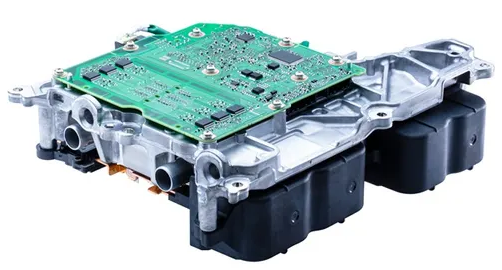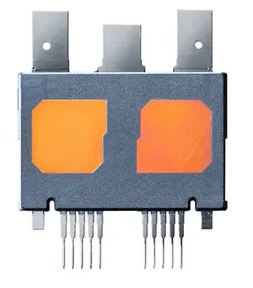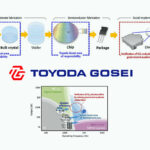ASIA ELECTRONICS INDUSTRYYOUR WINDOW TO SMART MANUFACTURING
DENSO Creates First Inverter Using SiC Power IC
DENSO CORPORATION develops its first-ever inverter with silicon carbide (SiC) semiconductors. The revolutionary inverter is incorporated in the eAxle, an electric driving module developed by BluE Nexus Corporation. Also, the inverter will be used in the new RZ, Lexus’ first dedicated battery electric vehicle (BEV) model.

SiC power semiconductors consist of silicon (Si) and carbon (C), which significantly reduce power loss compared with Si power semiconductors. Cruising test verification by BEV was performed in a certain condition using SiC semiconductor inverters. It demonstrated that inverters with SiC power semiconductor reduce power loss less than half of those with Si semiconductor. As a result, the energy efficiency of BEVs is improved and the cruising range is extended.
Key Elements of Inverter Development
Specifically, the SiC power semiconductors feature DENSO’s unique trench-type metal-oxide-semiconductor (MOS) structure1. It improves the output per chip due to lower power loss caused by generated heat. Moreover, the unique structure achieved high voltage and low on-resistance2 operation.
Key Elements of Inverter Manufacturing
DENSO utilized SiC epitaxial wafers3 based on the high-quality technology jointly developed by DENSO and Toyota Central R&D Labs., Inc. The SiC epitaxial wafers incorporate the results of work commissioned by the New Energy and Industrial Technology Development Organization (NEDO). As a result, the number of crystal defects was halved, thus preventing the device from operating normally due to the disorder of the atomic arrangement of the crystal.
Also, reducing crystal defects ensures the quality of SiC power semiconductor devices used in vehicles and their stable production.
DENSO calls its SiC technology REVOSIC. The company uses it to comprehensively develop technologies for products ranging from wafers to semiconductor devices and modules such as power cards.
DENSO will contribute to the realization of a carbon-neutral society through development aimed at more efficient energy management for vehicles, while also utilizing the grant from Green Innovation Fund (GI Fund)4, adopted in 2022.

1DENSO’s unique trench-type MOS structure: Semiconductor devices with a trench gate using DENSO’s patented electric field relaxation technology.
2On-resistance: A measure of the ease of current flow; the lower the value, the lower the power loss.
3 SiC epitaxial wafer: A layer of epitaxial SiC single crystal deposited onto a single crystal SiC wafer.
4 Green Innovation Fund (GI Fund): GI Fund was created by Ministry of Economy, Trade and Industry (METI) and assigned to NEDO with the aim of achieving carbon neutrality by 2050. DENSO was selected to receive subsidies for a project to develop manufacturing technology for next-generation power semiconductor devices (for electric vehicles).




